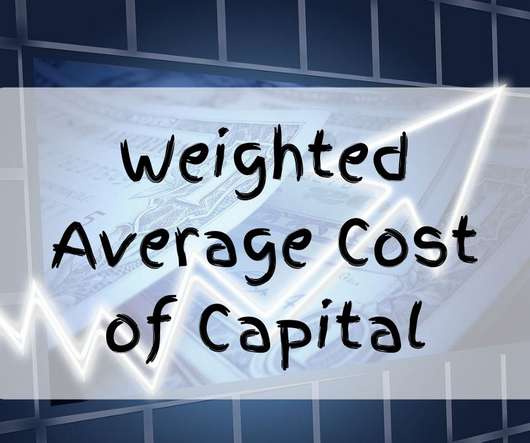What is Weighted Average Cost of Capital (WACC)?
Andrew Stolz
AUGUST 5, 2020
What Impacts the Weighted Average Cost of Capital? The optimal capital structure of a company is the proportion of debt and equity financing that maximizes the company’s value while minimizing the cost of capital (WACC). The lower the cost of capital, the higher the present value of future cash flows.












Let's personalize your content